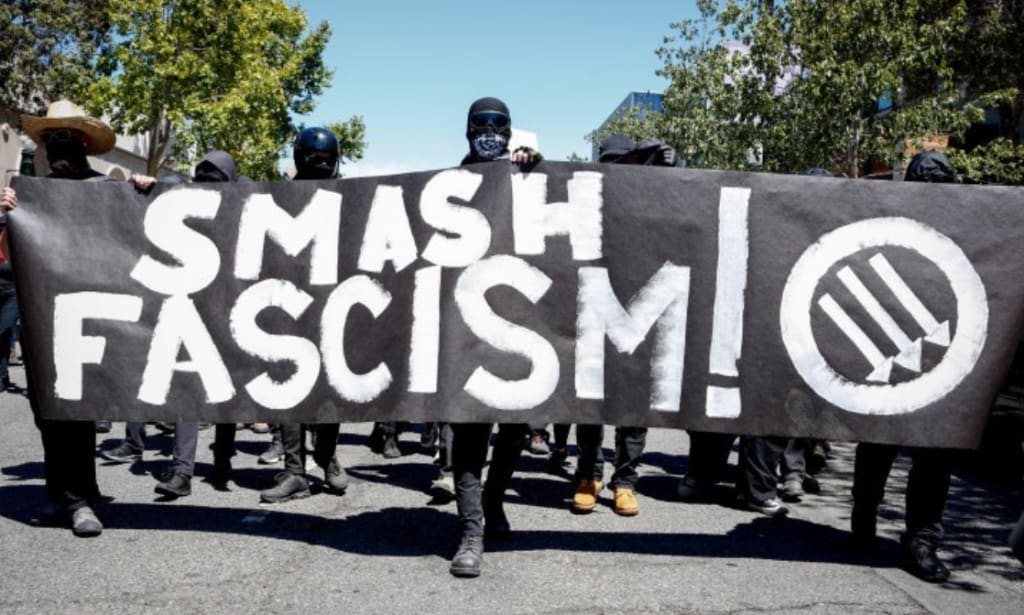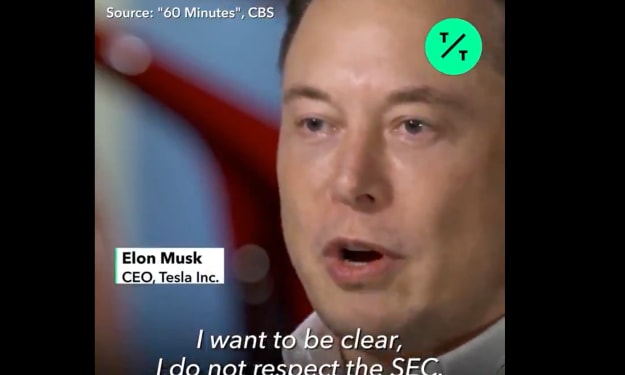The Controversial Tactics of ANTIFA: Is Violence Ever Justified?
Exploring the Ethical, Legal, and Practical Implications of Antifa's Controversial Use of Violence in Political Activism

Introduction
Antifa, short for "anti-fascist," is a loose network of militant leftist groups that have gained notoriety for their confrontational tactics. Antifa activists use a variety of tactics, including direct action, doxing, and property destruction, but their most controversial method is the use of violence. Supporters of Antifa argue that violence is a necessary and justified means of self-defense against fascist and white supremacist ideologies, while critics argue that the potential harm to innocent bystanders, the risk of escalation, and the legal and ethical implications of violent tactics are unacceptable. This article will explore the history of Antifa, the arguments for and against their use of violence, case studies of their tactics, the role of government in addressing Antifa, and the larger debate on the use of violence as a means of political activism. By examining these issues, we can gain a better understanding of the ethical, legal, and practical implications of Antifa's controversial tactics.
The History of Antifa
Antifa's origins can be traced back to Europe in the 1920s and 1930s when militant leftist groups formed to combat the rise of fascism. These groups, which were often organized into networks of cells, used a variety of tactics, including street fighting, sabotage, and assassinations, to disrupt fascist activities and prevent the spread of their ideology. Antifa groups were particularly active in Germany in the 1930s, where they clashed with the Nazi Party and its supporters.
After World War II, Antifa groups disbanded or went underground, but the rise of far-right and fascist groups in the 1980s and 1990s led to the resurgence of Antifa activism. Today, Antifa groups can be found in countries around the world, including the United States, where they have become more visible and controversial in recent years.
Antifa's tactics have evolved over time, but their focus on direct action and militant opposition to fascism and white supremacy has remained constant. In recent years, Antifa activists have become known for their use of "black bloc" tactics, in which they dress in all black and cover their faces to conceal their identities while engaging in direct action. These tactics often involve property destruction, but the use of violence has become a defining characteristic of Antifa activism.
The Argument for Antifa’s Tactics
Supporters of Antifa's tactics argue that violence is a necessary and justified means of self-defense against fascism and white supremacy. They argue that fascist and white supremacist ideologies are inherently violent and that peaceful or nonviolent tactics are insufficient to combat them. The following are some of the main arguments put forth by supporters of Antifa's use of violence:
A. Antifa’s belief in the use of violence as self-defense
Antifa activists argue that violence is a legitimate means of self-defense when confronting fascist and white supremacist groups. They point out that fascist and white supremacist groups often use violence and intimidation to achieve their goals, and that Antifa's use of violence is therefore a necessary response to their aggression. Antifa activists often frame their use of violence as a means of protecting marginalized communities from harm.
B. The role of Antifa in combating fascism and white supremacy
Antifa supporters argue that their tactics are effective in combating fascist and white supremacist ideologies. They argue that these ideologies are not only dangerous to marginalized communities but also to democracy and civil society as a whole. Antifa activists see themselves as part of a broader movement that aims to push back against the rising tide of far-right extremism and prevent it from gaining a foothold in society.
C. The argument that nonviolent tactics have failed in the past
Antifa supporters also argue that nonviolent tactics have failed to effectively counter fascist and white supremacist ideologies in the past. They point to historical examples, such as the rise of fascism in Europe in the 1930s, where peaceful or nonviolent resistance was ineffective in stopping the spread of these ideologies. They argue that the use of violence is therefore a necessary and justified response to the threat posed by these groups.
In summary, supporters of Antifa's tactics believe that violence is a legitimate means of self-defense against fascist and white supremacist groups, that Antifa's use of violence is effective in combating these ideologies, and that nonviolent tactics have failed in the past.
The Argument Against Antifa’s Tactics
Critics of Antifa's tactics argue that the use of violence is unacceptable and that it poses significant ethical, legal, and practical problems. The following are some of the main arguments put forth by critics of Antifa's use of violence:
A. The potential harm to innocent bystanders
Critics argue that Antifa's use of violence puts innocent bystanders at risk. They point to examples of property destruction, vandalism, and physical altercations that have resulted in injuries to innocent individuals. Critics argue that the use of violence is not only morally unjustifiable but also counterproductive, as it risks alienating potential allies and turning public opinion against the movement.
B. The risk of escalation
Critics also argue that the use of violence by Antifa groups risks escalating conflicts and leading to further violence. They argue that violence begets violence, and that Antifa's tactics could lead to a cycle of violence that is difficult to control. Critics also point out that the use of violence by Antifa groups could provoke a violent response from fascist and white supremacist groups, leading to further harm to innocent individuals.
C. The legal and ethical implications of violent tactics
Critics of Antifa's tactics also raise concerns about the legal and ethical implications of violent activism. They argue that the use of violence is illegal and that Antifa activists who engage in violent activities could face legal consequences. Critics also argue that the use of violence is ethically problematic, as it violates the principles of nonviolence and peaceful resistance that are central to many social justice movements.
In summary, critics of Antifa's tactics argue that the use of violence poses significant ethical, legal, and practical problems, including the potential harm to innocent bystanders, the risk of escalation, and the legal and ethical implications of violent activism.
Case Studies of Antifa’s Tactics
To better understand the controversies surrounding Antifa's tactics, it is helpful to examine specific examples of their actions. The following are case studies of Antifa's tactics:
A. Berkeley, California (2017)
In 2017, Antifa activists clashed with far-right groups in Berkeley, California. The clashes, which involved violence and property damage, received widespread media attention and sparked a national debate about Antifa's tactics. Supporters of Antifa argued that their actions were necessary to prevent white supremacist groups from spreading their ideology, while critics argued that their tactics were violent and counterproductive.
B. Portland, Oregon (2018-2019)
In 2018 and 2019, Antifa activists engaged in a series of confrontations with far-right groups in Portland, Oregon. These confrontations often turned violent and resulted in injuries to both Antifa activists and their opponents. Critics of Antifa's tactics argued that their use of violence was inappropriate and put innocent bystanders at risk, while supporters argued that they were acting in self-defense against fascist and white supremacist groups.
C. Seattle, Washington (2020)
In 2020, Antifa activists established an "autonomous zone" in Seattle, Washington. The zone, which was established in response to protests against police brutality, was initially peaceful, but tensions escalated when Antifa activists clashed with police and far-right groups. The situation ultimately led to the intervention of law enforcement, who cleared the zone and made several arrests. Supporters of Antifa argued that the zone was a peaceful protest and that law enforcement's intervention was an act of repression, while critics argued that the zone was a violent and lawless space that put innocent individuals at risk.
In summary, these case studies illustrate the controversies surrounding Antifa's tactics, including the use of violence, property damage, and the potential harm to innocent individuals. While supporters of Antifa argue that their tactics are necessary to combat fascist and white supremacist ideologies, critics argue that their use of violence is unethical, illegal, and counterproductive.
The Role of Government in Addressing Antifa’s Tactics
The use of violence by Antifa groups has raised questions about the role of government in addressing their tactics. The following are some of the ways that government has responded to Antifa's actions:
A. Law enforcement response
Law enforcement agencies have played a significant role in responding to Antifa's tactics. In some cases, law enforcement has used force to disperse crowds and make arrests, while in other cases, they have been criticized for not doing enough to prevent violence. The use of force by law enforcement has been controversial, with some arguing that it is necessary to maintain public safety, while others argue that it can escalate tensions and put innocent individuals at risk.
B. Political response
Politicians have also responded to Antifa's tactics, with some expressing support for their actions and others condemning their use of violence. Some politicians have called for Antifa to be designated as a domestic terrorist organization, while others have called for increased dialogue and nonviolent solutions to address social justice issues. The political response to Antifa's tactics has been highly divisive, with supporters and critics arguing over the appropriate response to their actions.
C. Legal response
The use of violence by Antifa groups has also led to legal consequences. Antifa activists who engage in violent activities can be arrested and charged with crimes such as assault, vandalism, and destruction of property. Some critics have called for more aggressive legal action against Antifa activists, while supporters argue that they are being unfairly targeted by law enforcement.
In summary, the role of government in addressing Antifa's tactics is complex and controversial. Law enforcement agencies, politicians, and the legal system all play a role in responding to Antifa's actions, but their responses can be contentious and divisive. Ultimately, the question of how to address Antifa's tactics raises broader questions about the appropriate use of force in response to social justice issues and the role of government in protecting public safety while respecting individual rights.
Conclusion
In conclusion, Antifa's controversial tactics have sparked a national debate about the appropriate use of force in response to social justice issues. Supporters of Antifa argue that their use of violence is necessary to combat fascist and white supremacist ideologies, while critics argue that their tactics are counterproductive and put innocent individuals at risk. The role of government in addressing Antifa's tactics is complex, with law enforcement agencies, politicians, and the legal system all playing a role in responding to their actions. Ultimately, the debate over Antifa's tactics raises broader questions about the appropriate use of force in response to social justice issues and the role of government in protecting public safety while respecting individual rights. It is important to continue this discussion and work towards nonviolent solutions to address social justice issues while maintaining public safety.
About the Creator
Samuel
I write about Science/Tech/Business & Anything that can give value to people ❤️
I'm on YouTube too guys feel free to check out my channel here: www.youtube.com/@sambladeco
Enjoyed the story? Support the Creator.
Subscribe for free to receive all their stories in your feed. You could also pledge your support or give them a one-off tip, letting them know you appreciate their work.






Comments
There are no comments for this story
Be the first to respond and start the conversation.